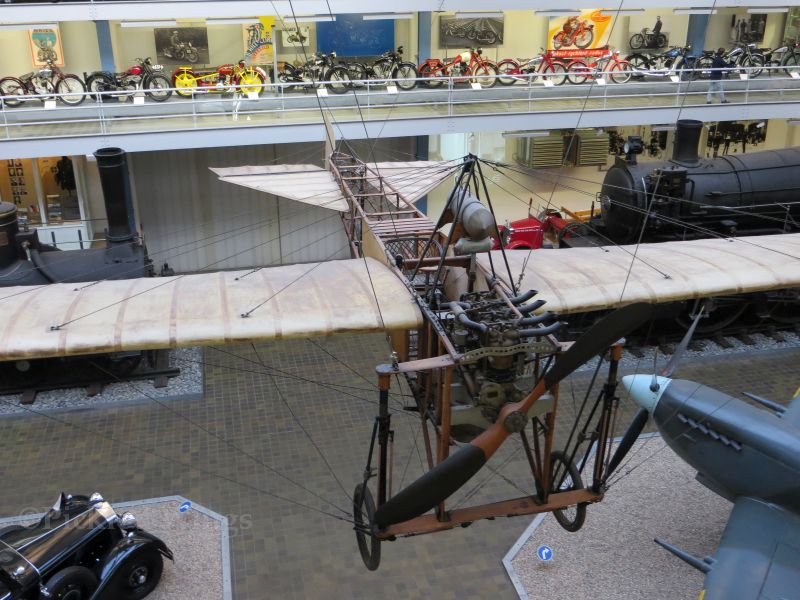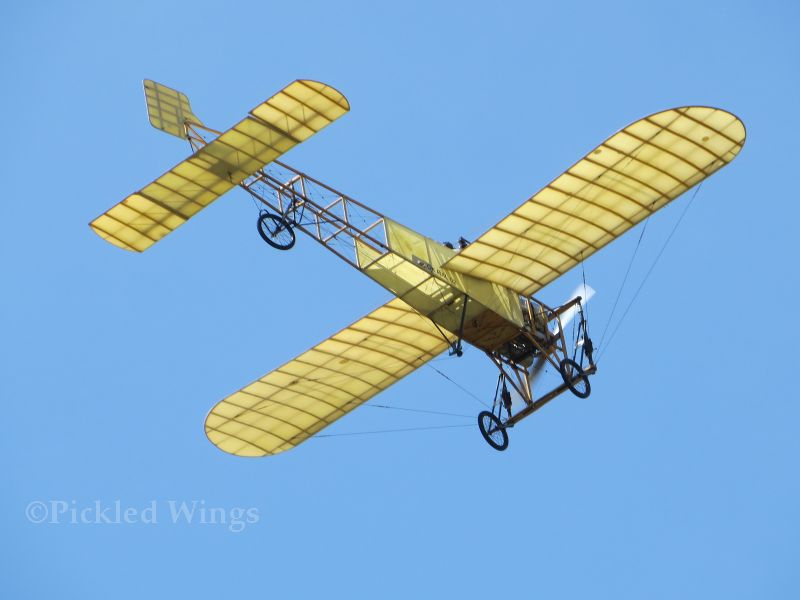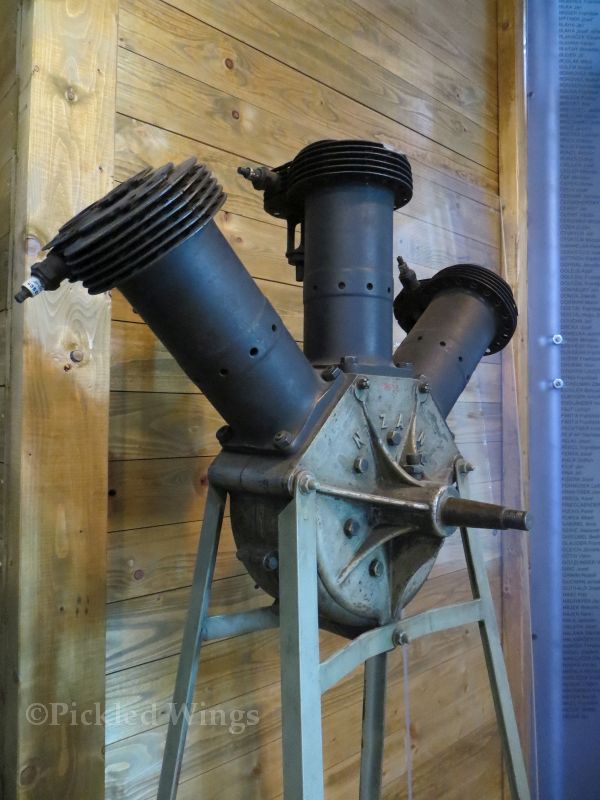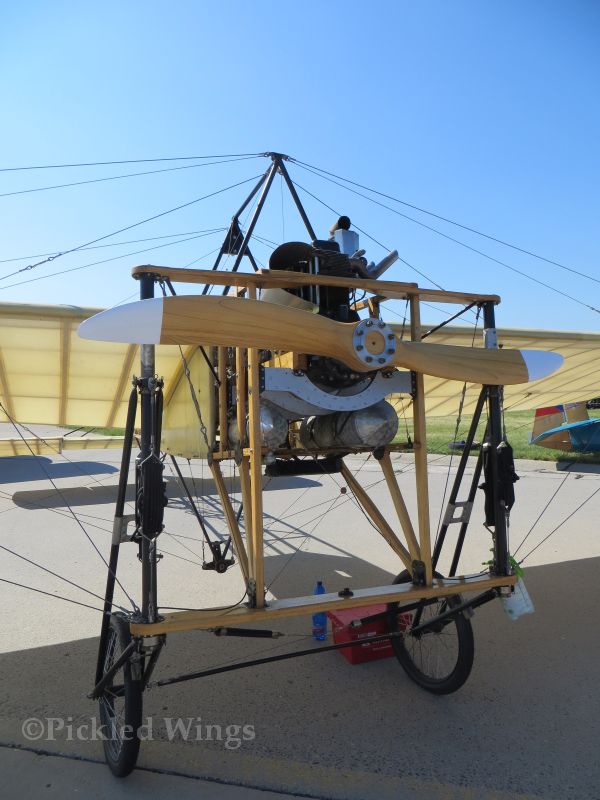Icon of Ingenuity
One of the most recognisable and successful aircraft types of the pioneering era of aviation, which lasted from 1900 to 1913, was the Blériot XI. Arguably, it could also be considered one of the most influential aircraft in history.
First flown in January of 1909, the Blériot XI is most famously connected to the historic crossing of the English Channel in July of that same year by the man the aircraft bore the name of, Louis Blériot.
Louis Charles Joseph Blériot (1872-1936) was an engineer by training and achieved early success by inventing the first practical automobile headlamp and building a business around it. Though he had been interested in aviation since being a student at the prestigious and demanding École Centrale in Paris, he did not experiment in the field until after his headlamp business had generated enough profit to afford him the time and money to do so.
Blériot’s first serious steps into aviation came with a short lived and unsuccessful partnership with fellow French aviation pioneer, Gabriel Voisin (1880-1973). After the partnership was disolved, Blériot created his own company in 1906. Blériot Aéronautique, as the new company would become known, was a private company that spent the bulk of its pre World War I existence as a research facility as much as an aircraft manufacturer.
In the context of aviation history, the work done by Blériot Aéronautique established the basic methods of controlling an airplane in flight that are still in use today. A rudder to control the aircraft’s nose movements to the left and right and elevators to control the aircraft’s vertical movements first appeared on aircraft bearing the Blériot name. Wing warping, a method of twisting the aircraft’s wings to influence left and right rolling action, was also seen for the first time on European aircraft through machines bearing the Blériot name. While wing warping would soon give way to separate ailerons to control the aircraft’s roll action, the two methods worked on the same principle.
Blériot’s flight over the English Channel in 1909 cemented not only his name, but the Blériot XI into the international conciousness of the day and history books. The flight would also ensure that his aircraft business would see continued success for some time to come.
In 1913, Blériot headed up a consortium to buy the assets of the bankrupt Deperdussin aircraft company, Société de Production des Aéroplanes Deperdussin, better known as SPAD. Upon taking possession of SPAD’s assets and absorbing them into his own company, he renamed it Société Pour L’Aviation et ses Dérivés, which allowed him to continue use of the SPAD name. SPAD would become a legendary name associated with First World War fighter aircraft from France.
In the post WWI period, the company designed and built aircraft under both the Blériot and SPAD names. Blériot ceased using the SPAD name in 1921 and reverted to the Blériot Aéronautique name. The final aircraft to be built which bore the Blériot name flew in 1933 and was a large flying boat designed to carry mail from Dakar, Senegal to Natal in Brazil.
In October of 1936, Blériot and five other aircraft companies were nationalised and merged to become Société nationale des constructions aéronautiques du sud-ouest. The new company was best known by its abreviation, SNCASO, and was used to create Sud Aviation in 1957. In 1970, through more company mergers, Sud Aviation became part of Aérospatiale. Eventually Aérospatiale would become part of today’s Airbus company.
As such, it would be no form of exageration to see Blériot Aéronautique as one of Airbus’ earliest ancestors.
Over the Channel and into History
The frail appearance that the frabric on wood frame construction gave to the Blériot XI belied an aircraft of robust structural strength for the day and remarkable flexibility for modifications. In these qualities, the aircraft would find great popularity well beyond the borders of the nation that created it.
The strength of the aircraft’s construction was demonstrated at the end of the historic event it is most often connected with, Louis Blériot’s 1909 English Channel crossing. The aircraft flew through quite turbulent winds and the flight ended with a heavy landing that damaged the landing gear and destroyed one of the propeller blades. In spite of the damage and the fact that the aircraft never flew again, Blériot was able to walk away from the landing without injury.
Almost as soon as the history making flight concluded and word of it shot around the world, Blériot was inundated by purchase orders for copies of the aircraft. He also set up flying schools in both France and Great Britain within a year of the flight.
Through his historic flight and the aircraft he did it with, Blériot had ushered in a new and more accepting mentality among the public towards flight. He became an overnight sensation and the Blériot XI became the object of desire for anyone with the means to purchase one and the training to go with it.
The Blériot XI was in serial production from late 1909 to slightly after the outbreak of the First World War and total production numbers came to around 800 aircraft across more than 20 versions. As such, the Blériot XI became the most common and popular aircraft of its day.
As with all great accomplishments more than one person is usually to credit.
Blériot was assisted in the creation and success of the Blériot XI by fellow French aviation pioneer, Raymond Saulnier (1881-1964). Saulnier was an aeronautical engineer by training and, like Blériot, an alumnus of École Centrale. The bulk of the credit for the aircraft’s design can be given to Saulnier as it was he who developed the Blériot XI from the earlier Blériot VIII model.
Another Frenchman involved was propeller designer, Lucien Chauviere (1876-1966). He designed some of the first modern propellers in Europe and it was one of his designs that was used to drive Blériot’s plane for the channel crossing.
The French based Italian engine designer, Alessandro Anzani (1877-1956), was another key player in the success of the Blériot XI. The aircraft had started life with a rather unreliable engine of French origins and, on his mechanic’s advice, Blériot made contact with Anzani to secure a better power source. At the time, Anzani was developing a number of three cylinder engine designs that included the 25 horsepower W-3 engine that was fitted to the aircraft for the historic flight.
When the Blériot XI initially went into serial production, it was offered with a choice of two types of Anzani three cylinder engine. Over the course of production, the airframe was adapted to a number of other engine types with varying degrees of success.
Flying for Firsts
As one might expect, owing to its popularity in the early era of aviation, the Blériot XI was involved with many more historical firsts than the 1909 English Channel Crossing.
While it was categorised as a sports and training aircraft first and foremost, the Blériot XI had the distinction of being the first aircraft taken into military service. More than 20 nations ultimately took the type into their military air arms.
The French and Italian military flying services took on fleets of the type starting in 1910 while the Royal Flying Corps (RFC) of Great Britain took the aircraft into service in 1912. The aircraft type would serve extensively in reconnaissance, training and light bombing roles during the early stages of the First World War.
Even before the outbreak of the First World War, the Blériot XI became the first aircraft to be used in military missions when, in 1911, it was used by the Italian military in northern Africa to fly reconnaissance missions against Turkish forces in the Italo-Turkish War.
The Blériot XI was also one of the world’s first successful monoplane aircraft designs. At a time when most aviation pioneers were experimenting with biplane and other multiwing designs, Louis Blériot was an early champion of monoplanes.
Many early aviation records for speed, distance and altitude were set with the Blériot XI in the pioneering era of flight. However, as one might expect in a period of rapid aeronautical development, most of those records did not stand for very long.
In the scope of more lasting historic contributions, Blériot’s own crossing of the English Channel was just one of a number of aeronautical firsts in which the Blériot XI was the aircraft of choice.
In 1912, the aircraft was the first to fly across the Irish Sea and first across the North Sea in 1914. In 1912, in the hands of American aviatrix Harriet Quimby, it was the first aircraft piloted solo by a woman to cross the English Channel.
The aircraft became the first to fly over the Alps and Pyrenees mountain ranges.
The earliest regularly scheduled air mail routes in America, Australia and Great Britain were all first flown in the Blériot XI.
In 1913, the aircraft was central to what is generally considered to be the world’s first airshow. Adolphe Pégoud, who would go on to become the world’s first fighter ace pilot in the First World War, was the first pilot to demonstrate the aerobatic potential of the Blériot XI. Pégoud was a key organiser of the airshow and is considered by many to be the first pilot to complete a loop in an aircraft. However, this claim is contested by some who say that a Russian pilot flew the world’s first loop in a Nieuport made monoplane about two weeks before Pégoud flew his loop.
What Remains and Learning More
Flying examples of the Blériot XI, in either original or replica form, are rather a rarity. However, they are out there.
Airworthy examples of original aircraft, or airframes that contain significant original materials and structures, are known to exist in America, Great Britain and Sweden.
Significant among these airworthy originals is the one that belongs to the Shuttleworth Collection in Great Britain. Built in 1909 and powered by an original Anzani three cylinder engine, this aircraft is at once the oldest known airworthy aircraft in the world and the oldest airframe and engine combination still flying in the world.
Stationary museum exhibits of the aircraft are rather easier to find as several are known to be on display, in either original or replica form, in museums across Europe as well as America, Argentina, Australia and Canada.
The following links will take you to websites that feature original aircraft in collections in Australia and France. The Australian link goes quite in depth with regards to that nation’s relationship with the aircraft.
This link at kitplanes.com will take you to an article about a replica aircraft in America.
This link will take you to a quite enlightening article about what the Blériot XI is like to fly. After reading this article, I had a whole new and elevated level of respect for those who dared to fly in the pioneering era of flight.






